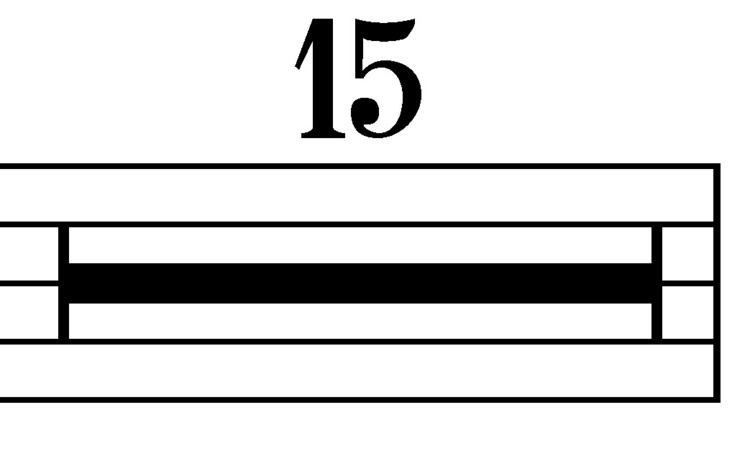 | ||
A rest is an interval of silence in a piece of music, marked by a symbol indicating the length of the pause. Each rest symbol and name corresponds with a particular note value for length, indicating how long the silence should last.
Contents
Description
Rests are intervals of silence in pieces of music, marked by symbols indicating the length of the pause. Each rest symbol and name corresponds with a particular note value, indicating how long the silence should last, generally as a multiplier of a measure or whole note.
One-bar rests
When an entire bar is devoid of notes, a whole (semibreve) rest is used, regardless of the actual time signature. The only exceptions are for a 4
2 time signature (four half notes per bar), when a double whole rest is typically used for a bar's rest, and for time signatures shorter than 3
16, when a rest of the actual measure length would be used. For a 4
2 bar rest, it is also common to use the whole rest instead of the double whole rest, so that a whole-bar rest for all time signatures starting from 3
16 is notated using a whole note rest. Some published (usually earlier) music places the numeral "1" above the rest to confirm the extent of the rest.
Occasionally in manuscript autographs and facsimiles, bars without notes are sometimes left completely empty, possibly even without the staves.
Multiple measure rests
In instrumental parts, rests of more than one bar in the same meter and key may be indicated with a multimeasure rest (British English: multiple bar rest), showing the number of bars of rest, as shown. Multimeasure rests of are usually drawn in one of two ways:
The number of whole-rest lengths for which the multimeasure rest lasts is indicated by a number printed above the musical staff (usually at the same size as the numerals in a time signature). If a meter or key change occurs during a multimeasure rest, the rest must be broken up as required for clarity, with the change of key and/or meter indicated between the rests. This also applies in the case of double barlines, which demarcate musical phrases or sections.
Dotted rests
A rest may also have a dot after it, increasing its duration by half, but this is less commonly used than with notes, except occasionally in modern music notated in compound meters such as 6
8 or 12
8. In these meters the long-standing convention has been to indicate one beat of rest as a quarter rest followed by an eighth rest (equivalent to three eighths).
